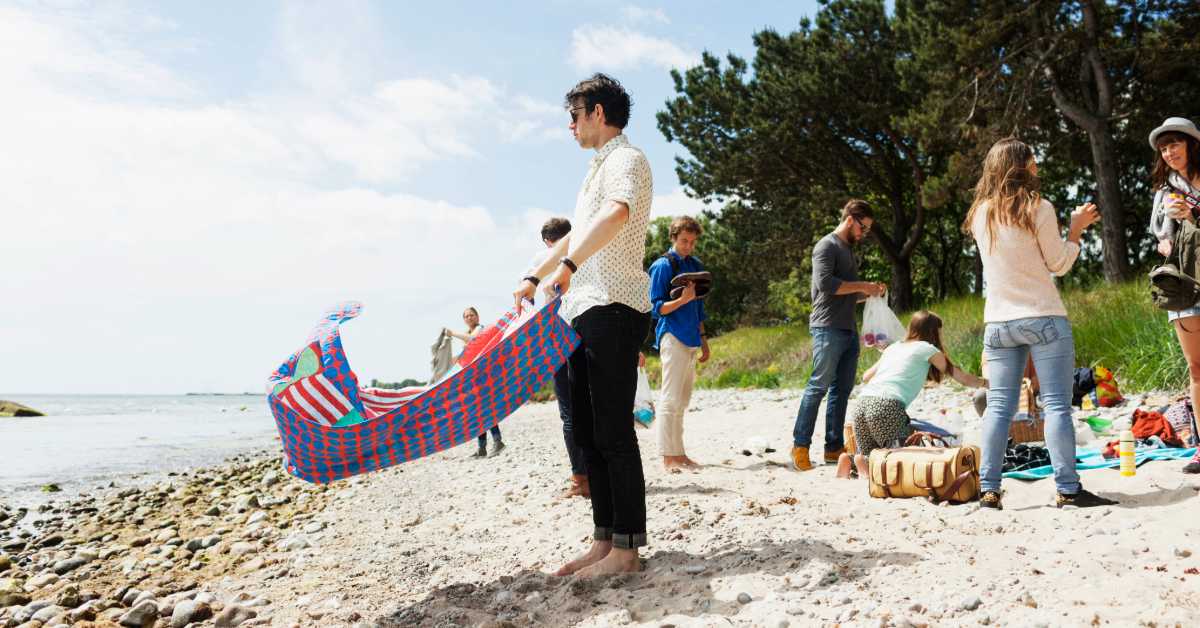While thousands of Danes are heading south for summer vacations, an increasing number of Southern Europeans are choosing Denmark as their holiday destination thanks to its pleasant climate, natural beauty, and stable environment.
South-to-North Tourism on the Rise
In recent years, Denmark’s tourism industry has been booming—not only from local interest, but also an uptick in international travelers from Southern Europe. A growing number of tourists from countries such as Italy, Spain, and France are trading the Mediterranean sun for Denmark’s leafy green parks, historic cities, and cooler weather. It looks like more Europeans are curious to explore something new.
Between January and May 2024 alone, there were 50,000 more overnight stays in Denmark by Southern Europeans compared to the same period the year before. This represents an 8% increase, underscoring a broader shift in European travel patterns. If the numbers continue to increase, Denmark might become a new summer favourite.
Denmark’s Mild Climate a Key Attraction
The change in preference stems partially from Europe’s shifting weather realities. Increasingly extreme heatwaves in Southern Europe are making traditional destinations in Italy, Spain, and Greece less attractive to vacationers who are looking for comfortable and active holidays. Denmark’s mild summer temperatures and lush green landscapes are proving especially attractive to tourists who want to spend time outdoors.
This trend is especially noticeable in places like Aarhus and its surroundings, where visitors are flocking to nature spots and museums. Tourists have cited Denmark’s green spaces, walkable suburban areas, and vibrant cultural experiences as major draws.
Cultural Experiences and Camping Boost Appeal
Major cultural destinations like the Moesgaard Museum near Aarhus are reporting a surge in visitors from the south, with France now the second-largest market for international guests after Germany. In fact, combined visitor numbers from Spain, Italy, and France now exceed those from neighboring Scandinavian countries, marking a notable shift in regional travel dynamics.
The trend extends well beyond museums and urban experiences. Danish campsites are also reporting high interest from Southern European families, with many arriving in the later summer months of August and September. This timing not only extends the tourism season in Denmark, but also allows visitors to enjoy quieter travel conditions and late-summer weather.
The ‘Coolcation’ Trend Gains Ground
Travel experts and tourism professionals are calling this emerging interest the rise of the “coolcation”—vacations in cooler climates as an antidote to scorching heat farther south. Denmark is positioning itself as a prime location for this type of travel, featuring a robust tourism infrastructure, safe cities, and a wide array of vacation options across a compact and accessible country.
This is not by accident. VisitDenmark, the nation’s official tourism organization, has been ramping up its marketing initiatives in key markets such as France and Italy. These efforts are paying off, with increased interest in Denmark as a relaxing yet active summer getaway.
Southern Travelers Still a Minority, But Growing
While the number of Southern European tourists is growing, they still make up a relatively small portion of the total visitor count. Only about 5% of all overnight stays in Denmark are booked by tourists from countries south of the Alps. By contrast, Germans remain the most dominant tourist group, responsible for an astounding 62% of all foreign overnight stays in 2024.
Still, tourism officials are optimistic that Southern Europe represents an emerging market segment with long-term promise. Destinations in Greece, Croatia, Cyprus, and Slovenia are seeing a small decline in international interest—down by 8%—pointing to a re-balancing of European travel habits and climate-driven vacation planning.
Denmark’s Position as a Northern Getaway
Denmark ranks as the number one tourist destination in Scandinavia and hosts as many foreign overnight stays as Sweden, Norway, and Finland combined. Thanks to its strategic location, appeal to families, and sustainable travel options, the country is increasingly viewed as both a practical and attractive summer vacation alternative.
With its comfortable climate, safe environment, and growing reputation abroad, Denmark is no longer just a stepping stone on the way to the Nordic wilderness—it’s becoming a destination in its own right for southern travelers fleeing the heat.




